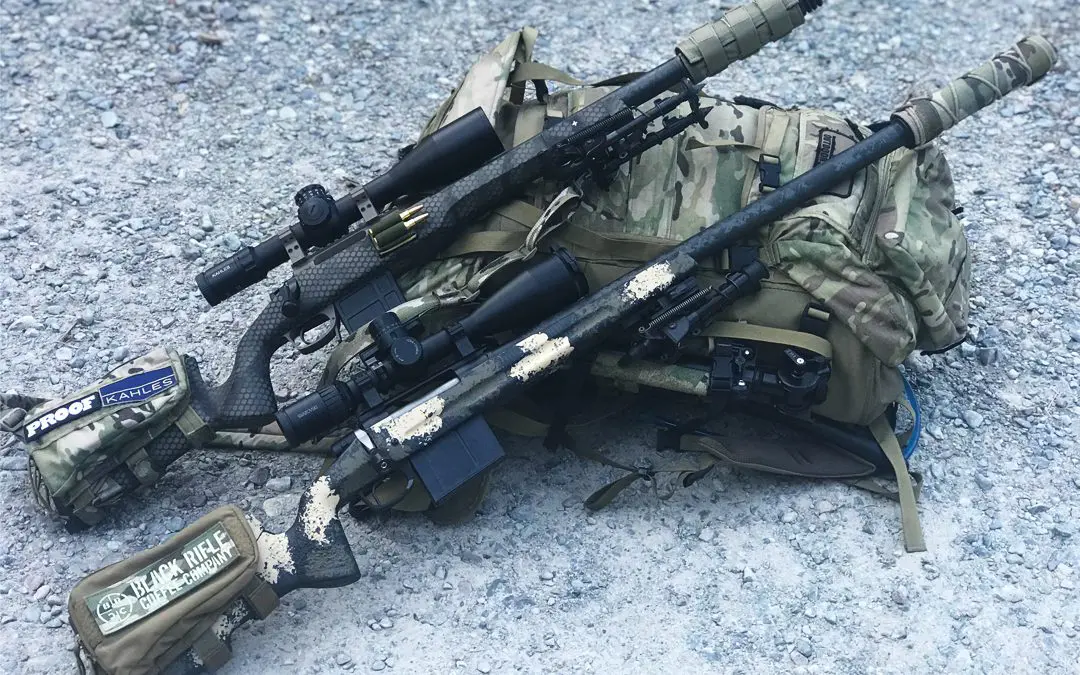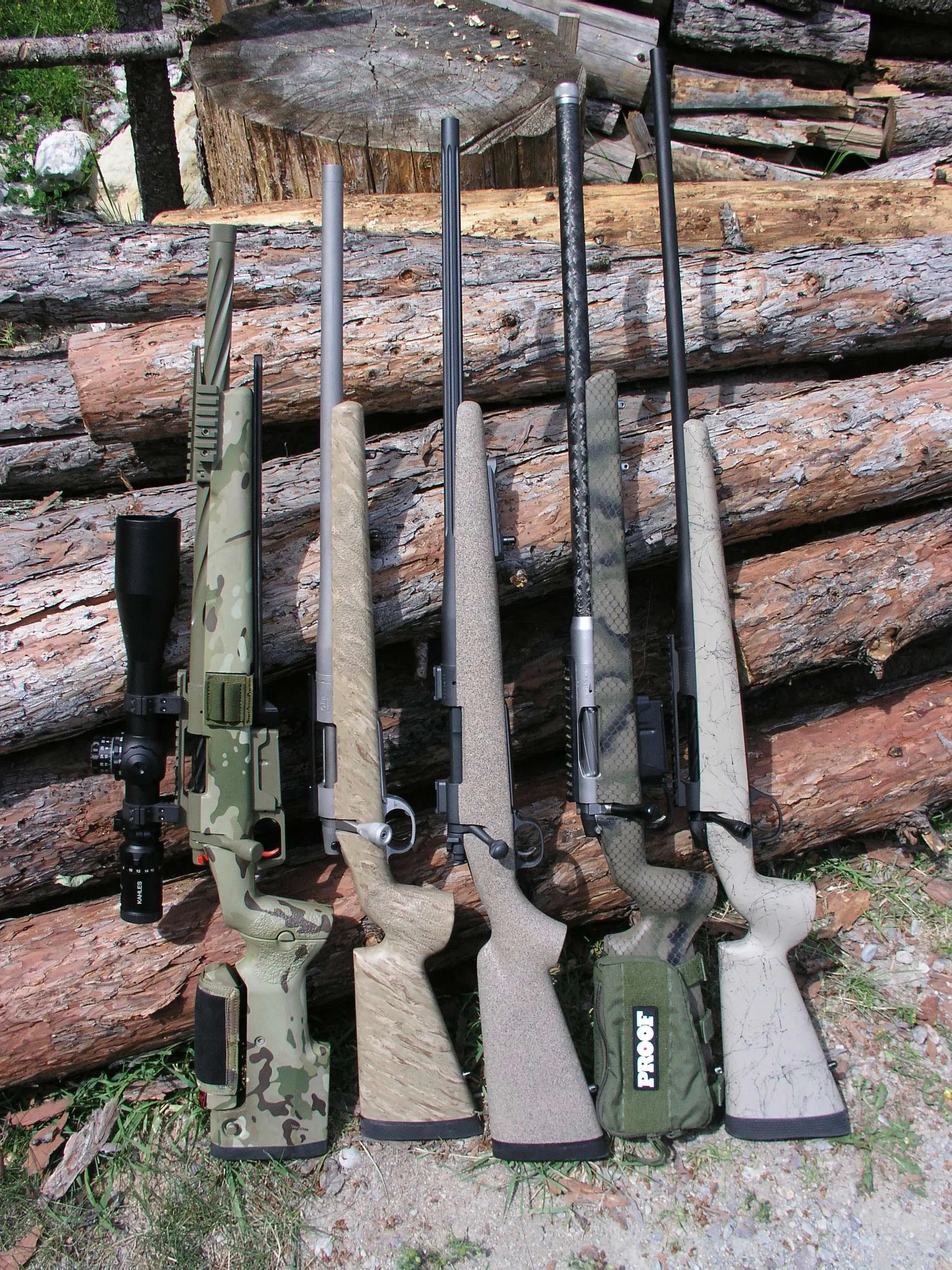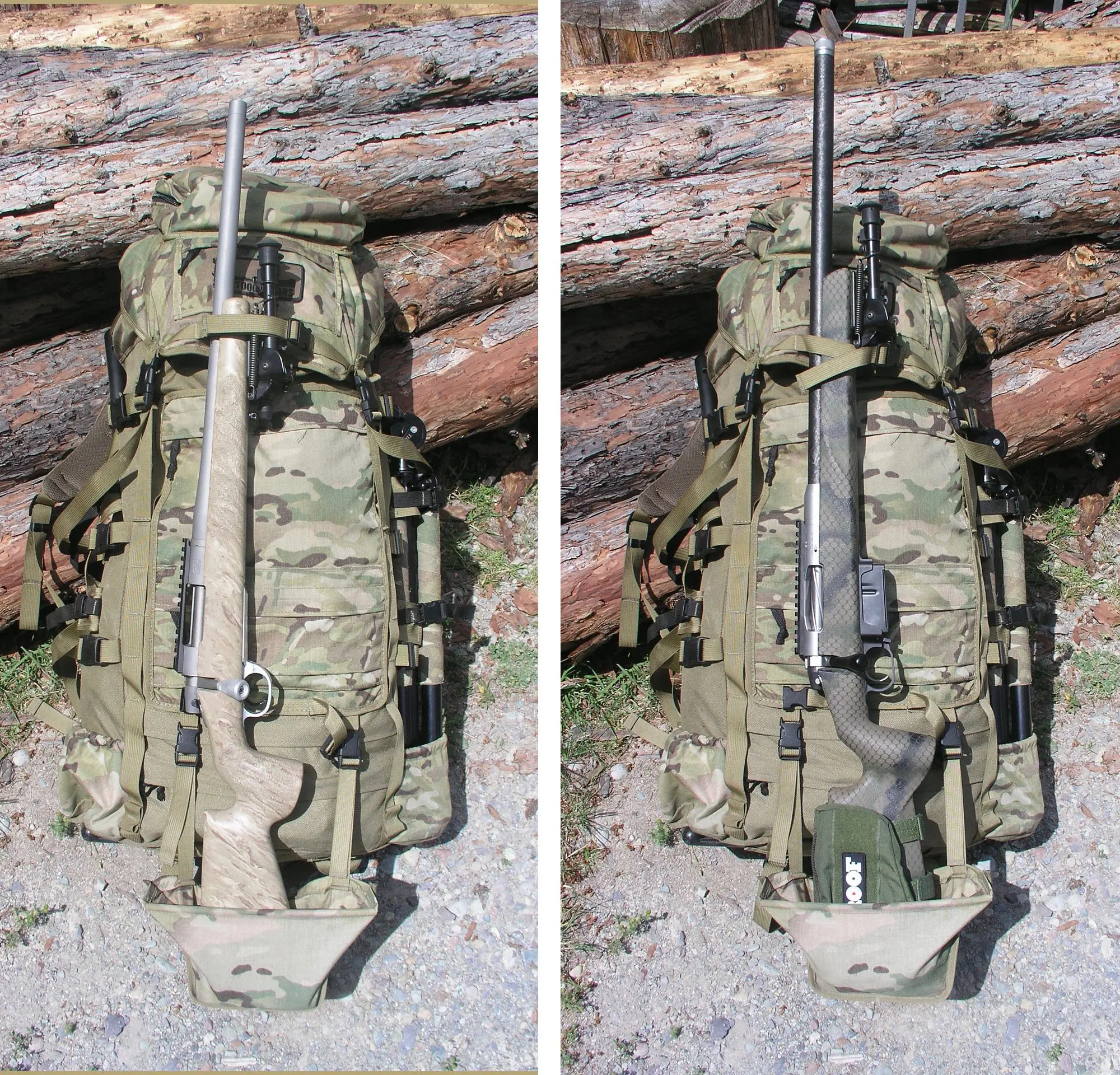
NOTICE: Certain links on this post may earn a commission for Western Hunter Magazine from Amazon or our other affiliate partners when you make a purchase. Thank you for your support.
Barrel Length 101
In our recent history, only military and police snipers used short barrel length rifles to aid in the concealment of the shooter. Hunters didn’t seem too concerned about concealing their position when rifle hunting (mostly because deer not typically returning fire).
We gravitated to long barrels to increase muzzle velocity, in part due to our lack of technology in the early days in aiding range estimation at extended ranges. We didn’t have rangefinders or iPhones that accurately give real-time data for bullet drop.
We were also quick to jump on the magnum rifle train to limit our “slop” and make up for our lack of knowledge about bullet flight. The theory was to shoot a bigger gun with a bigger bullet so if you were off on your range estimation or the wind picked up, you’d still hit the deer.
Well, times have changed and technology now allows us to accurately place bullets on small targets well beyond 1,000 yards with capable rifles and shooters. Dial it back to 400-700 yards hunting big game in the Lower 48 and now success is even more obtainable with standard cartridges and balanced rifles.
When selecting a new rifle, available cartridges and prices usually make up the top two features on most buyers’ lists. Overall weight, stock composition, and other features round out the remainder of the typical rifle buyer’s list.
In my rifle building days, most customers purchasing a custom rifle would specify a cartridge and rifle design (i.e. stock design, length of pull, trigger weight, DBM type), leaving barrel length dead last at times. I’d follow up every order with questions: 1) What is the intended purpose for the rifle? 2) What bullet/bullets are you primarily planning on using? 3) Do you plan to reload or shoot factory ammo? 4) Will the rifle be suppressed? 5) Is it a backcountry hunting rifle that will be packed? 6) Will this rifle ever leave a flat gun range shooting steel targets? 6) Will this rifle be mounted to a tripod? The same questions should also be asked when selecting a factory rifle as well because the mountain doesn’t care who built your rifle.
I’m a firm believer in using as short of a barrel as possible in every rifle build. I’ve personally had the best results with my rifles donning shorter, stiff barrels. I like the way they balance and the added maneuverability of a rifle with a short barrel is much desired.
Now, “short” is a subjective term and can be interpreted in many ways. For instance, an 18” barrel is ideal for a .308 Win., but perhaps would be wasted on a .338 Lapua. For all intents and purposes in this article, we will be talking about hunting rifles chambered in standard short and long actions to shed some light on the topic of barrel length.

Shorter barrels are typically stiffer, making them less affected by harmonics and in some regards tend to be more accurate than their longer counterparts in my experience. Your barrel length should reflect the cartridge in each rifle for the intended purpose of said rifle.
I think of rifles as golf clubs. No one in the history of golf has ever walked out on to the fairway with one club. Some chum drags a bag of clubs around the course to allow himself the ability to select the proper club for the application. Rifles are no different. You don’t need a safe full of rifles with one for every day of the week, but at the same time, is there anything wrong with that? I know I wouldn’t mind that collection.
I’ve performed several barrel length tests with .260 Rem., 6.5 Creedmoor, .308 Win. and .300 Win.-mag. by starting with a 26” blank. I’d shoot the rifle through a chronograph, cut a 1” section off, re-crown, and repeat until I reached a point in which velocity dropped off significantly.
Twist rate, bullet design, caliber, and load data have an effect on burn rate, and results will vary from barrel to barrel. Many of the popular short-action cartridges used for hunting have a case capacity ranging from 35-50 grains of propellant. This charge will typically be burned up in 22-23”, but can be effective with barrel lengths in the 16.5-20” range depending on the application.
In most short-action cartridges, I would see a loss of 10-20 fps per inch of barrel length until the 16-18” range, where it would begin to lose 20-30 fps per inch. Standard long-action cases have an average of 45-60 grains of propellant. These cases typically need 23-24” to burn the full charge, but can be very effective in the 20-22” barrel length. Magnum cases are a totally different beast, with 60-80 grains of propellant needing 24-26” to typically burn the full charge.
I recently tested a .300 Win.-mag. with a 20” barrel spinning a 220-gr. ELDX with a muzzle velocity of 2595 fps, yielding a downrange velocity of 1464 fps and 1047 ft/lbs of energy at 1,000 yards. For comparison, a standard .300 Win.-mag load with 180-gr. AccuBonds at 3000 fps in a 24” barrel will produce a muzzle velocity of 3000 fps and yield a downrange velocity of 1427 fps and 814 ft/lbs of energy at 1,000 yards (these results are from hand-loaded ammunition).
The difference in the drop is 10.4 mils, compared to 8.8 mils. Wind deflection is 1.0 for the 220-gr. ELDX and 1.1 mils for the 180-gr. AccuBond with a full value of 5 mph wind.
Now, compare this data to a 6.5 Creedmoor shooting a 143-gr ELDX with a muzzle velocity of 2675 fps. Downrange at 1000 yards, you can expect 1480 fps and 695 ft/lbs of energy. Drop is 10.1 mils with a 5 mph wind deflecting the bullet 1.0 mils.
Most people would laugh at a 20” .300 Win-mag, but it’s hard to argue with the numbers. All will get the job done; they just have different ways of getting there. The big takeaway from this is that your muzzle velocity is important, but your downrange velocity and energy at your max effective range is king, so keep that in mind on your next rifle purchase. As always, bullet selection is key to ensure you retain as much energy as possible, especially when you’re dealing with slower velocities.
With the advent of sleeker bullets having less bearing surface on the lands of the barrel, I’m seeing even less velocity loss compared to the older bullets I used during the bulk of my testing. This allows me to shoot a shorter barrel and lose minimal velocity thanks to the efficiency of the projectile.
Yes, you can get even more velocity by loading it hotter and using a longer barrel, but in doing so, you’ll experience a much shorter barrel life, thus costing you more money in the long run. Risk vs. benefit comes into play; yes you can make the bullet faster, but at what cost? And how much are you really gaining?
I’m currently building a 20” 6.5 Creedmoor on a Gunwerks GRB action and have been very pleased with the initial product. The 50 fps lost in comparison to my 24” 6.5 Creedmoor results in a .2 Mil change in my drop at 500 yards.
The purpose of building this rifle is to create a suppressed mountain rifle capable of harvesting deer and bears within 600-700 yards. The rifle must be short and fast handling when hunting the steep mountainous forests of northwest Montana.
This rifle will deliver a 140-grain, high-ballistic-coefficient bullet at over 1,700 fps with close to 900 ft/lbs of energy at 700 yards. I prefer to keep my optimal bullet performance for most North American big game above 1,600 fps with approximately 1,000 ft/lbs of energy. This rifle will deliver everything I need and more for this hunting niche.
Chart showing barrel length effect on velocity:
6.5 Creedmoor Factory Hornady 143-gr. ELDX: Velocity average of 10 shots
|
Barrel Length |
Avg. MV |
Drop-in Milradian @500 meters |
Drop-in Milradian @1000 meters |
|
26” |
2665 |
3.4 mils |
10.1 mils |
|
25” |
2668 |
3.4 mils |
10.1 mils |
|
24” |
2675 |
3.4 mils |
10.0 mils |
|
23” |
2662 |
3.4 mils |
10.1 mils |
|
22” |
2648 |
3.5 mils |
10.2 mils |
|
21” |
2636 |
3.5 mils |
10.4 mils |
|
20” |
2620 |
3.6 mils |
10.6 mils |
|
19” |
2598 |
3.7 mils |
10.8 mils |
This data shows that with factory ammunition, you won’t be gaining much if any velocity with a longer barrel once the charge has been burned. Anything longer is actually increasing drag on the bullet and reducing velocity. If you reload, you may be able to increase velocity slightly depending on cartridge type, case manufacturer, primer, propellant, bullet design, and seating depth.
Another consideration when deciding your next rifle’s barrel length is the addition of a suppressor. An extra 2-4” of the barrel isn’t an issue until you screw on an 8” long, 20-oz. suppressor to that 26” Sporter profile barrel. Then things change, big time.

The addition of the suppressor changes the harmonics of the barrel, thus changing the point of impact and accuracy of the rifle. This isn’t an issue if the suppressor is on the rifle for the zeroing and data collection process.
Where you’ll get into trouble is when you take the suppressor off to pack the rifle. If an opportunity quickly presents itself, you’ll more than likely miss if the target is beyond 100 yards if you fail to get your suppressor attached.
Depending on suppressor make and attachment style ( i.e. direct thread or brake attach), I’ve seen an impact shift of up to 1” on some suppressors when taken off and re-attached. I run direct thread suppressors, and once the rifle is zeroed for the season, the suppressor doesn’t come off unless I plan to re-confirm my zero. Just a few thoughts to keep in your back pocket if you’re considering the addition of a suppressor to your hunting arsenal.
I challenge you to try a short barrel on your next rifle purchase and do your research into what the ideal rifle is for your intended application. Compare cartridge options and barrel length options to ensure it will be a benefit and not a hindrance for you in the field.
As always, keep the gun conversation alive by following me @papwinkle on Instagram or email me at colton@westernhunter.net. Never stop training, never stop evolving your skill, and always question everything.

